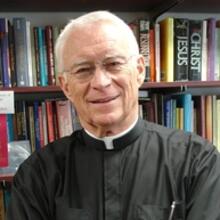Communio
Cardinal Walter Kasper, prefect of the Vatican’s Pontifical Council for Promoting Christian Unity, was well established as a theologian long before being made a bishop. For many years he was on the faculty of the University of Tübingen, where his colleagues included Hans Küng. His present book is a collection of essays on ecumenism, originally given as conferences. Topics include the current ecumenical situation, the purpose of dialogue, communio as the guiding concept of Catholic ecumenical theology, the ecclesiology of sister churches, the renewal of pneumatology, the joint declaration on justification, the Petrine ministry and contemporary pluralism.
If the ecumenical climate has changed dramatically since the Second Vatican Council, Kasper is enough of a realist to acknowledge that there has been no major progress on questions of ecclesiology. Core differences rest in institutional questions, the Petrine ministry for the Oriental and Orthodox churches and apostolic succession in the episcopate for the churches of the Reformation.
The chapter on the Petrine ministry is quite helpful. Kasper notes that in an increasingly globalized world, the conviction that there should be a ministry of unity is developing ecumenically. But that ministry cannot simply be imposed on other churches in its present historical form. Like others, he calls for a “rereading” (Ratzinger) and “re-reception” (Congar) of the teachings of Vatican Council I and Vatican Council II in light of the whole history of the church. From this perspective, the teachings of both councils remain incomplete. Practical and theological questions which remain open include the relations between primacy and collegiality, the universal and the local church, the interpretation of the pope’s jurisdiction in local churches and the applicability of the principle of subsidiarity, among others. In other words, there is considerable room for reform.
Kasper is also very helpful in addressing the difficult question of relations with the Eastern churches, including the filioque clause, the future of the Eastern Catholic churches and the problem of the autocephaly of the Orthodox national churches. He cites Orthodox theologian George Florovsky to the effect that Orthodox ecclesiology is still in a pre-theological stage. The Orthodox have no clear consensus about the ecclesial and salvific character of the non-Orthodox churches or on the validity of their baptism; nor do they distinguish between full and partial communion, so important for Catholic ecumenical theology. So considerable differences remain. Kasper suggests interpreting the filioque clause about the procession of the Son, added to the Western creed in the 11th century, in the context of the common creed of 381, with both sides renewing their Trinitarian theology. If Catholics could emphasize that the Spirit principaliter emanates from the Father (monarchy), the East might better address the relationship between the Son and the Spirit, with the implication of a relational Trinitarian ontology so important for a communio-ecclesiology.
A chapter on the Lutheran-Roman Catholic Joint Declaration on the Doctrine of Justification gives evidence of a substantial consensus on the issue at the heart of the Reformation, while noting that it is a differentiated consensus that leaves room for remaining differences in language, accents and emphases. Thus it honors the Lutheran emphasis on the sovereignty of grace, while at the same time respecting Trent’s concern to affirm our cooperation in justification, empowered by grace. Kasper also notes that many Catholics and Lutherans today no longer feel the burden of sin and guilt addressed by the 16th-century formulations, suggesting a need to translate the doctrine into more contemporary language.
He notes that the Congregation for the Doctrine of the Faith’s declaration Dominus Iesus (2000) went beyond the council’s words in saying that the church of Christ is “fully” realized “only” in the Catholic Church. This does not mean, however, that there is an “ecclesial vacuum” outside it. The Reformation “ecclesial communities” don’t want to be churches in the same way that the Catholic Church understands itself; if the statement says that they are not churches in the proper sense, they certainly are in an “improper sense” analogous to the Catholic Church.
Perhaps the best chapter in That They May All Be One is the final one, on the church and contemporary pluralism. Kasper skillfully traces Christianity’s status as a state church from the time of Constantine, its banishment to private life with modern secularization, the contemporary (postmodern) rejection of universal systems, which makes even the claim to possession of the truth seem totalitarian. In such a world the church can no longer declare that “error has no rights,” as it once did. Without giving up its claim to the truth, it must recognize that truth does not exist in itself, but only in free human subjects. Thus it must acknowledge and defend the freedom of all, and dialogue for cultures and religions becomes essential as the way to peace.
As a theologian who is also a cardinal of the Roman Curia, Kasper shows considerable ability to push the tradition and at the same time to interpret some of its more difficult positions. Nevertheless, the present book is not as challenging as his earlier book, Leadership in the Church (2003). He sees the ecumenical movement as being in an interim period, a transitional stage that may last some time before reaching the goal of full communion and its expression in intercommunion. Still, his new book is rich in wisdom for pursuing Jesus’ call “that all may be one.”
This article also appeared in print, under the headline “Communio,” in the May 30, 2005, issue.








